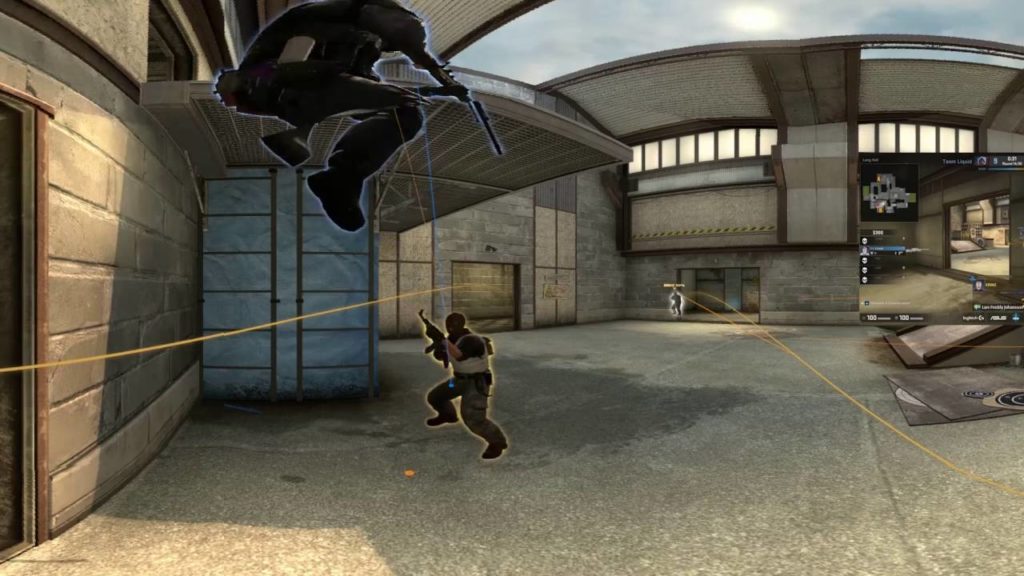ESL and Intel, the title sponsor of the global Intel Extreme Masters (IEM) eSports tournament, are bringing virtual reality to IEM Oakland at Oracle Arena November 19-20. It’s the first time the traveling tournament is setting up shop in the home of the Golden State Warriors, having used the San Jose Sharks’ SAP Center in recent years. One of the key focuses for Intel at the Counter-Strike: Global Offensive (CS:GO) event is virtual reality, according to Intel’s worldwide event marketing manager, George Woo.
“We’re always looking to push the envelope and trying to get some good experiences at the tournaments,” Woo told [a]listdaily. “We’re hosting a VR celebrity match between Navin “NS” Shenoy and Jason “Moses” O’Toole playing The Unspoken to drive home the VR messaging and show Intel’s leadership position and where we want to take the technology.”
The winner of the celebrity match will donate $10,000 to Iridescent, an organization whose mission it is to open up the fields of science, technology, engineering and math (STEM) to youth in disenfranchised communities with a special emphasis on girls. Woo added that VR is a big marketing focus for Intel. That’s one reason why IEM 2016 will also be the first Intel tournament to be livestreamed in VR through a partnership between ESL and Sliver.tv. Augmented live stats will be integrated into the 360-degree livestreams across CS:GO and League of Legends matches.
Intel will have 8-to-10 VR stations around the arena spread across all three levels, so the approximately 10,000 anticipated attendees can watch the Sliver.tv broadcast. There will be multiple VR headsets inside the Intel Showcase, which will showcase different VR experiences as well as local desktop gaming. Oculus VR is a new partner this year and will have VR games on display, including Insomniac Games’ The Unspoken.
Woo said one of the key marketing messages Intel is explaining to people is needing a Core i7 processor to get a truly immersive VR experience on the highest settings, as well as features like multitasking, 4K content and streaming. “We want to target the early adopters and help take VR more mainstream,” Woo said. “ESports will help continue that drive.”
Intel has a multiyear approach when it comes to the future integration of eSports with virtual reality. “The first step is to offer this spectator view in eSports, and then a few years down the line when more headsets are in the marketplace, we’ll evolve VR into eSports,” Woo said. “We’ll have teams competing in VR games with headsets and the ability for fans to spectate both in the arena and on the gameplay field. That’s the end goal. We want to be at the forefront of VR and eSports.”
Although there aren’t as many VR headsets out in the world today, Woo explained that Sliver.tv supports a 360 view on mobile devices. “It’s not as immersive an experience as with goggles, but you can use the accelerometer to get a 2D view of both the stadium and as a spectator in the game world,” he said.
Since Intel doesn’t have a direct marketing partnership with Sliver.tv (that relationship is with ESL), Woo said Intel is trying to tell its VR story through the on-site VR Celebrity Match.
“Viewers might not have a headset, but they should think about it,” Woo said. “We’re starting this journey and hope it will continue to evolve.”
Outside of virtual reality, Intel is also showcasing its support of the growing collegiate eSports outreach. IEM 2016 is hosting a League of Legends college match between Stanford and Cal Berkeley, which mirrors the college football match-up that same weekend. “ESports is going to college campuses and a lot of universities are getting into it, and we want to continue to keep that moving forward and get more involved,” said Woo.
This is the third year of IEM in the San Francisco Bay Area. Woo said Intel has secured a lot more partners to participate in the exhibit space, including Oculus Rift, iBUYPOWER, HyperX, Xfinity, Acer and Totino’s. Over the past 11 seasons, Intel has used over 10 different games. In fact, Counter-Strike 1.6 was one of the tournament’s first titles. Last year, IEM welcomed CS:GO into its competition.
“One reason a lot of leagues are using CS:GO is because of how easy Valve makes it to license and run the game,” Woo said. “There aren’t the restrictions like what Riot would do with LCS. The only challenge is that there are so many leagues and companies using CS:GO and many believe they can dump money into it and it just works, which isn’t the way to build a successful eSports business.”
Intel works with ESL, which uses its grass roots pro league platforms to test new potential eSports titles out. “Once it warrants to be on the level of IEM, they give us recommendations,” Woo said. “We’re looking at some games right now, but we still need to work with the publishers. We know Overwatch is a big title and growing fast, and we’re keeping an eye on that. And we’re also looking at Quake Champions, which has a 1-vs-1 first-person shooter competition that would be simple to add. We continue to look at both of these titles. Between the two, Overwatch would probably be first.”
Woo called IEM the Wimbledon of eSports and said “we may not have the biggest prize pool, but people know what to expect”
Learn everything you need to know to invest in today’s fastest-growing media channel—Competitive Gaming and eSports on 2.16.17 in Los Angeles. Go to alistsummit.com for more info.

